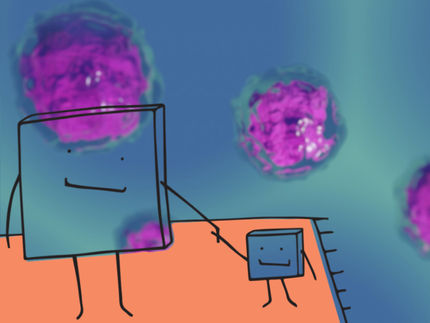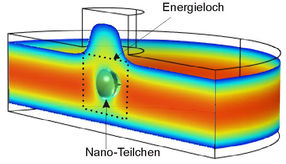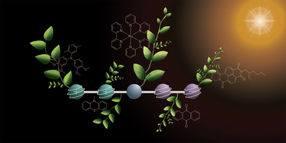Towards a better understanding of the human immune defense against RNA viruses
New findings in the fight against pandemics
Advertisement
An international research team led by Prof. Dr. Janosch Hennig from the University of Bayreuth has discovered how the TRIM25 protein contributes to defense against RNA viruses whose genetic material is contained as ribonucleic acid (RNA). The results provide a better understanding of the molecular mechanisms of the human immune system. The researchers have now reported their findings in Nature Communications.
The coronavirus has shown that there is a risk of a pandemic if viruses that are dangerous to humans mutate: These mutations spread more quickly and are more difficult for the human immune system to combat. This makes it all the more important to understand the molecular mechanisms of proteins that are responsible for the innate immune response in humans. New findings can then be used to develop novel antiviral drugs to contain pandemics.
The protein TRIM25 plays a central role in the innate immune defense against RNA viruses, but its role is still poorly understood. It is clear that TRIM25, as a so-called ubiquitin E3 ligase, triggers the immune system's response to viral RNA by transferring the molecule ubiquitin to the protein RIG-I, which then activates the immune defense. It was also discovered some time ago that TRIM25 itself can bind various forms of RNA. However, how exactly TRIM25 binds RNA and how this binding influences antiviral activity was previously unclear.
To gain a better understanding of the underlying molecular mechanism, an international research team led by Prof. Dr. Janosch Hennig (Chair of Biochemistry IV) at the University of Bayreuth has investigated TRIM25-RNA binding in more detail. Among other things, nuclear magnetic resonance (NMR) spectroscopy was carried out in Bayreuth, which can be used to clarify the electronic environment of atoms and the interaction with neighboring atoms. Using this and other biophysical methods, the researchers identified the RNA binding mechanism of TRIM25. Furthermore, sequences and structures in the viral RNA were identified to which TRIM25 specifically binds.
In a next step, the scientists produced a TRIM25 mutant that cannot bind RNA. The researchers used this mutant to test the influence of RNA binding on the antiviral properties of TRIM25: They infected cell cultures without TRIM25 with a virus and then added the ordinary TRIM25 or the mutant without RNA-binding ability. Examination of the cultures showed that viral gene activity is significantly increased when TRIM25 cannot bind the RNA. This indicates an essential role of TRIM25 RNA binding in antiviral activity.
Original publication
Lucía Álvarez, Kevin Haubrich, Louisa Iselin, Laurent Gillioz, Vincenzo Ruscica, Karine Lapouge, Sandra Augsten, Ina Huppertz, Nila Roy Choudhury,... Gracjan Michlewski, Matthias W. Hentze, Frédéric H. T. Allain, Alfredo Castello, Janosch Hennig; "The molecular dissection of TRIM25’s RNA-binding mechanism provides key insights into its antiviral activity"; Nature Communications, Volume 15, 2024-10-1




























































